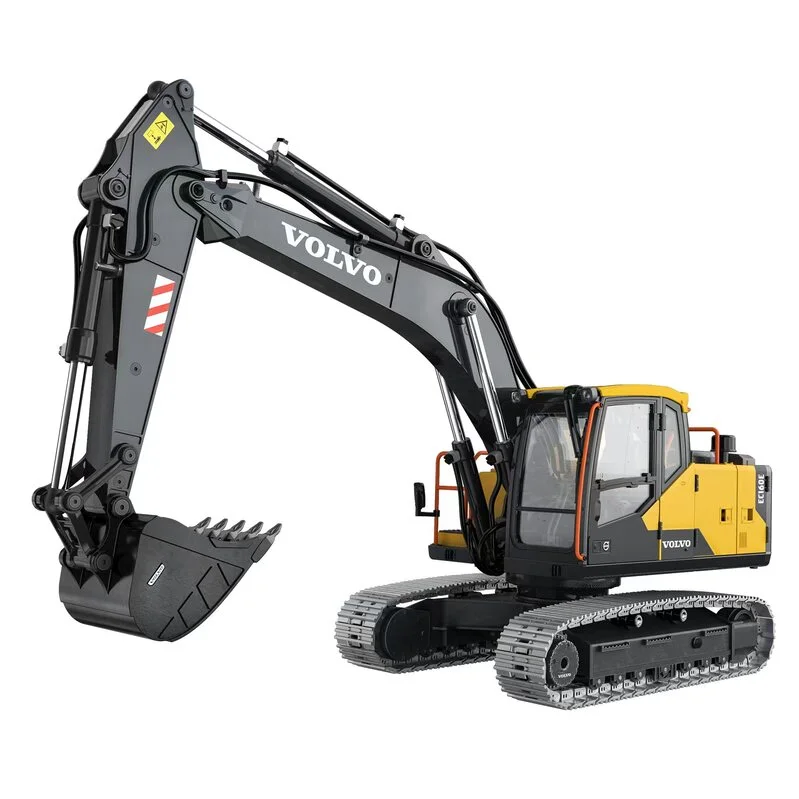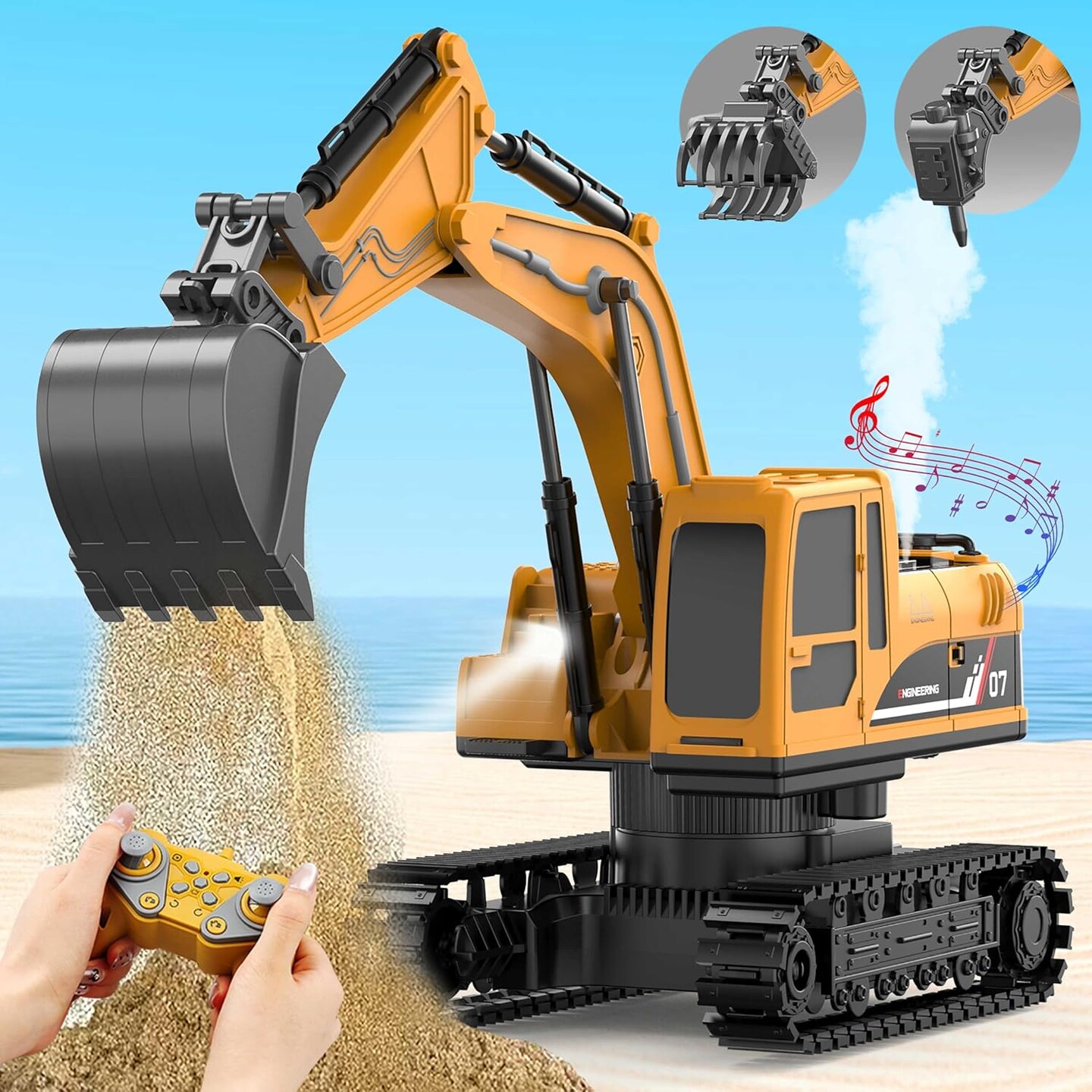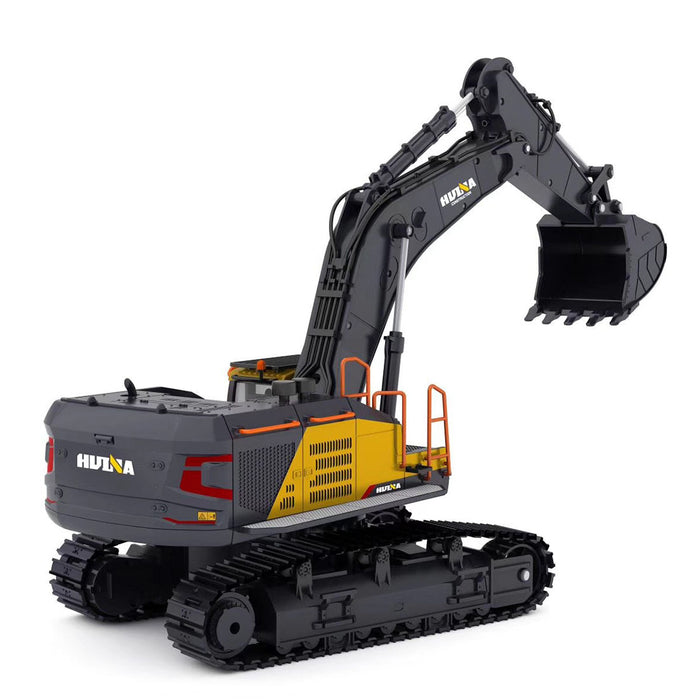The Important Functions of Excavator That Keep It a Must-Have Tool
Excavators are indispensable in the building and construction and landscape design markets. Their functional add-ons permit a range of jobs, from digging to demolition. In addition, they boast superior excavating depth and reach, powered by durable engines. Driver comfort and compact styles boost use in numerous environments. What absolutely establishes excavators apart are their advanced hydraulic systems and toughness. Understanding these attributes can clarify why they are considered crucial devices on any type of work site.
Flexible Accessories for Enhanced Capability
Although excavators are effective devices by themselves, the enhancement of versatile accessories greatly enhances their functionality. These add-ons change a typical excavator right into a multi-purpose tool, appropriate for a variety of jobs. Pails, for instance, can be found in different forms and dimensions, enabling operators to dig, scoop, and relocate products effectively. Hydraulic thumbs can be included for improved gripping and handling of large products, such as logs or rocks.Furthermore, specialized accessories like breakers and augers permit boring and demolition work, broadening the excavator's utility on building and construction sites. remote control excavator. Grapples are an additional choice, suitable for relocating and sorting debris. This flexibility not just boosts efficiency yet additionally lowers the demand for numerous equipments, conserving time and prices. By equipping excavators with the ideal attachments, operators can tackle varied tasks, making them vital in the building sector
Superior Excavating Depth and Reach
Excavators are designed with remarkable excavating deepness and reach, allowing them to steer in limited rooms and access hard-to-reach locations. This capability is important for different construction and excavation jobs, where traditional equipment may fall short. With flexible boom arms and extendable tracks, excavators can quickly navigate irregular terrain while preserving stability.The digging depth can differ substantially among designs, typically varying from 10 to 25 feet, relying on the design and purpose. This function enables drivers to dig deep into structures, trenches, and other deep frameworks efficiently. In addition, the reach of an excavator permits exact digging and product handling without repositioning the device frequently, conserving time and labor costs.Ultimately, the exceptional digging depth and reach of excavators make them crucial for professionals looking for to finish complicated jobs with accuracy and performance. Their versatility boosts productivity on work sites, showcasing them as a vital tool in modern-day building.
Powerful Engine Efficiency

Powerful engine performance plays a crucial duty in the abilities of an excavator when it comes to efficiency and performance on construction sites. A robust engine generates considerable horsepower, permitting the device to deal with heavy-duty jobs with simplicity - remote control excavator. This stamina equates into faster cycle times, enabling drivers to complete tasks much more quickly.Additionally, powerful engines give the necessary torque to handle tough surfaces and varied lots, guaranteeing that the excavator can execute successfully under different conditions. Whether it is raising, digging, or moving products, the engine's performance directly impacts the total functional efficiency of the machine.Furthermore, improvements in engine innovation have resulted in boosted gas performance, decreasing functional costs while preserving power output. Inevitably, the engine's performance functions as the backbone of an excavator, attesting its status as a vital tool in the building and construction industry
Advanced Hydraulic Solutions

Enhanced Raising Capacity
A considerable enhancement in raising ability can be credited to innovative hydraulic systems located in modern excavators. These systems utilize high-pressure liquid to create higher pressure, enabling drivers to lift larger tons with convenience. The engineering behind these hydraulics warranties peak performance, offering an excellent power-to-weight proportion that boosts overall effectiveness. Consequently, excavators can take on demanding tasks, such as lifting large products or equipment, without compromising stability. Additionally, the durable style of hydraulic elements contributes to increased resilience and reliability, making them appropriate for various building and construction atmospheres. This improved lifting capability not only minimizes the time needed for projects yet likewise minimizes the requirement for extra equipment, proving necessary for both efficiency and cost-effectiveness in the building industry.
Enhanced Accuracy Control
Conventional excavators often had a hard time with accuracy, modern-day hydraulic systems have transformed control devices, enabling operators to perform jobs with remarkable precision. These innovative systems make use of symmetrical control valves that enable smoother and extra responsive movements, considerably reducing the margin for error. Operators can now carefully tune the excavator's motions, making it much easier to browse limited areas and take care of delicate materials. Boosted feedback systems additionally notify drivers of real-time efficiency, making certain optimal coordination between the device and driver. This boosted accuracy not only improves performance yet article source likewise boosts security on task websites, minimizing the danger of mishaps. Consequently, modern-day excavators furnished with sophisticated hydraulic systems are invaluable tools for construction and excavation tasks calling for meticulous accuracy.
Driver Comfort and Visibility
Operator comfort and presence are crucial components in the design of contemporary excavators (remote control excavator). Attributes such as ergonomic seat style, boosted presence choices, and reliable control formats substantially improve the driver's experience and productivity. Focusing on these aspects guarantees that drivers can work effectively and safely in different conditions
Ergonomic Seat Layout
Convenience and exposure are paramount in excavator design, with the ergonomic seat playing an important function in improving the driver's experience. An ergonomic seat is crafted to sustain the operator's body, decreasing fatigue during long hours of operation. Flexible features, such as seat elevation, back-rest angle, and lumbar support, cater to private choices and advertise excellent stance. These changes boost convenience and enable the driver to preserve concentrate on tasks without discomfort. Additionally, a well-designed seat can give much better lateral support, permitting smoother handling when the excavator is in operation. This thoughtful style not just enhances efficiency yet also adds to general safety, making certain that operators can do their duties efficiently and effectively.
Enhanced Presence Attributes
The style of an excavator extends beyond simply the seat, with boosted visibility attributes playing a significant role in operator comfort and overall security. Large windows and purposefully located mirrors offer operators with a clear view of their environments, minimizing dead spots. This design consideration enables better spatial understanding, which is essential in hectic workplace. Additionally, many excavators integrate rearview electronic cameras and advanced surveillance systems that help drivers in maneuvering limited spaces. The combination of these presence includes not only advertises safety and security but additionally decreases operator tiredness by allowing simpler tracking of workplace. Eventually, enhanced visibility adds to a lot more efficient operations and helps ensure that excavators can execute their tasks efficiently and securely.
Control Layout Efficiency
While maneuvering complicated work sites, a reliable control design considerably boosts both operator comfort and presence. A properly designed control arrangement guarantees that drivers can access essential functions with minimal effort, lowering tiredness during lengthy hours. Ergonomic joystick positionings and intuitive switch plans permit smooth procedure, enabling drivers to maintain concentrate on the task handy. Furthermore, clear exposure of both the workspace and the control board is important for safety and security and precision. click here now Modern excavators commonly incorporate flexible seating and control setups to accommodate numerous driver preferences, further boosting convenience. Ultimately, a thoughtfully developed control design not only boosts performance yet likewise cultivates a more secure working atmosphere by permitting drivers to respond quickly to changing problems.
Compact Style for Urban Environments
As urban building and construction websites frequently deal with area constraints, a compact design ends up being crucial for excavators operating in these atmospheres. These makers are crafted to navigate tight areas, enabling efficient ability to move in jampacked job websites. A reduced impact allows them to work closely to existing structures, lessening disruption and making best use of productivity.The small layout frequently consists of much shorter tracks and a tighter transforming distance, facilitating operation in slim alleys and constrained locations. In addition, lightweight materials add to reduce of transport, making it simpler to relocate the excavator from one location to one more within the metropolitan landscape.Additionally, lots of small excavators are furnished with attributes such as functional add-ons and extendable arms, boosting their capability while keeping a tiny dimension. This adaptability allows drivers to deal with a range of jobs, from excavating to demolition, all while fitting perfectly into the constraints of city environments.

Durability and Upkeep Considerations
Durability stands as an important factor in the performance and longevity of excavators, especially popular metropolitan environments. These machines undergo extensive conditions, including varying soil kinds, extreme temperature levels, and high-frequency use. Top quality materials and robust building and construction are needed for making sure that excavators can endure these obstacles without endangering functionality.Regular upkeep is equally vital in maintaining toughness. Scheduled evaluations, timely oil modifications, and the substitute of used components add significantly to an excavator's life expectancy. Operators needs to also focus on hydraulic systems, tracks, and undercarriages, as these components commonly birth the brunt of wear and tear.Investing in durable excavators with substantial maintenance strategies boosts reliability and reduces downtime, ultimately resulting in raised productivity on construction websites. Recognizing the interaction between sturdiness and upkeep is important for anyone thinking about the purchase of an excavator for city tasks.
Regularly Asked Questions
Just How Do Excavators Contrast to Other Building Tools?
Excavators attract attention amongst building devices as a result of their flexibility, making it possible for jobs such as training, digging, and grading. Contrasted to others, their hydraulic capabilities provide greater effectiveness and power, making them vital on various work sites.
What Security Includes Are Consisted Of in Modern Excavators?
Modern excavators include numerous security functions, including rollover security systems, alarms, and advanced exposure enhancements. These elements collaborate to decrease risks, making certain operator safety and security while boosting effectiveness on building and construction websites and various other requiring environments.

Can Excavators Be Used in Winter Conditions?
Excavators can without a doubt be utilized in wintertime problems, offered they are outfitted with appropriate wintertime accessories and safety measures are taken. Proper upkeep and adjustments improve their performance, guaranteeing efficient operation despite tough weather situations.
What Is the Typical Life Expectancy of an Excavator?
The ordinary life-span of an excavator typically ranges from 7,000 to 10,000 hours of procedure. This period can significantly depend upon upkeep techniques, running conditions, and the particular version's durability and layout functions.
How Do I Pick the Right Excavator Size for My Task?
Picking the ideal excavator size includes evaluating task range, site conditions, and material types. Take into consideration variables like reach, deepness requirements, and weight capability to assure maximum performance and safety and security throughout procedure. Size matters considerably in project success. Additionally, the reach of an excavator allows for precise digging and product handling without repositioning the equipment often, saving time and labor costs.Ultimately, the superior excavating deepness and reach of excavators make them crucial for experts seeking to finish intricate jobs with precision and performance. Comfort and visibility are critical in excavator style, with the ergonomic seat playing an important role in boosting the driver's experience. The style of an excavator expands beyond simply the seat, with enhanced exposure features playing a considerable duty in driver comfort and general safety and security. Modern excavators typically incorporate adjustable seats and control setups to accommodate different operator preferences, additionally boosting convenience. Lightweight products contribute to alleviate of transport, making it less complex to relocate the excavator from one location to one more within the city landscape.Additionally, several compact excavators are outfitted with functions such as flexible add-ons and extendable arms, boosting their performance while preserving a little you can try here size.
Comments on “How to Maximize Efficiency with a rc excavator in Site Grading”